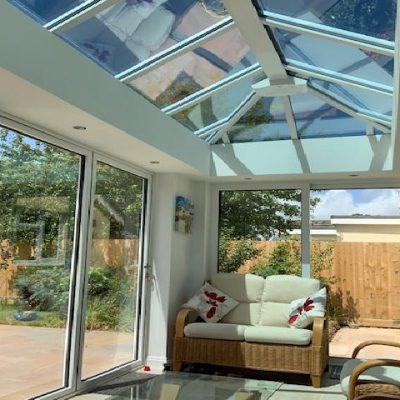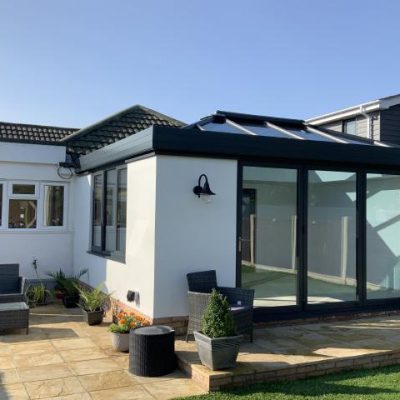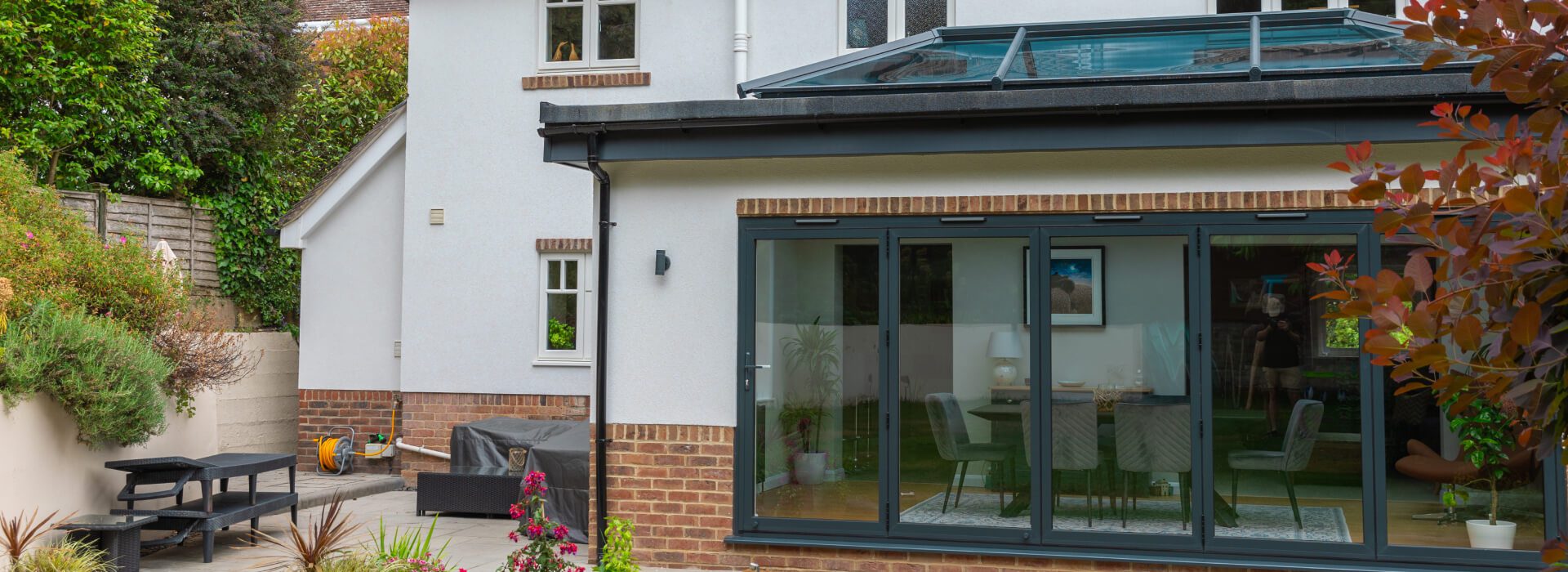What Is An Orangery?
When looking to add extra space to your home, you will need to choose between a conservatory, extension or orangery. Most people know the difference between a conservatory and an extension, but at Richard Thomas, we are frequently asked “What is an orangery?”
Conservatories are more popular these days, but they originated from orangeries. Today, the difference is predominantly in the materials used to construct the additional spaces.
Since 2008, we have been enhancing resident’s homes with bespoke conservatories, extensions and orangeries across Dorset, Hampshire and Wiltshire. Having worked on a variety of projects, building a unique look and feel for each project, we are experts at explaining the differences between each type of extension and what they offer.
In this blog, we discuss what defines an orangery.

The Historical Background of Orangeries
Orangeries are a product of the development of glass technology in the 17th century. As we worked out how to create large glass panes, tall glass windows became popular within building designs to optimise natural sunlight in the buildings.
Northern Europe started to use the rooms that had this sunlight as a place to grow citrus and exotic fruit, as the spaces were warm enough year-round, protecting the plants from the chill of winter. (Can you start to see where these spaces got their names?)
Typically, these buildings would be constructed from brick or stone, placing the large glass windows south-facing to maximise the amount of sunlight streaming in. The north-facing wall was solid brick to keep out the cold.
In the 19th century, builders started to fit a large central glazed lantern in place of the solid roof to capture even more light in the room.
Despite their practical beginnings as a place to grow, the orangery quickly gained popularity as an elaborate status symbol trend with striking architectural design. Rich owners of stately homes and estates took great pleasure in showcasing their ornate architectural designs and assortment of exotic flora.

What Is The Modern Definition Of An Orangery?
Today, an orangery is not so much used as a place for growing exotic plants and citrus fruit but is more of a leisure space and an additional space within the home to enjoy the sun.
The structure reflects the original designs, with large glass windows and a brick or stone structure. However, as we no longer grow fruit in these spaces, we don’t need to keep out the chill. We also now use insulation to keep the warmth in the room and cold air out, meaning we can add glass windows to the north-facing walls.
Key Features of Modern Orangeries
Orangeries have several key features that differentiate them from conservatories and extensions.
Their distinctive look includes:
- Large glass windows on the three external walls
- Stone or brick construction
- Flat roof
- Central glass lantern on the roof
- Ornate detailing and finishes
- High ceilings

What Is The Difference Between An Orangery, Conservatory Or Extension?
The most obvious difference will be the roof, as neither a conservatory nor an extension will have a large glass lantern in the middle.
The next difference will be the structure of the space; a conservatory will predominantly be a glass structure with a brick base and pitched roof. Meanwhile, an extension will be a brick structure with windows and doors, and an orangery will be a brick structure with large glass windows.
Finally, the usage of these spaces is likely to differ, with conservatories being used as spaces to enjoy sunlight and the outdoors and extensions and orangeries used for whatever you want it to be – kitchen space, children’s play area, dining room or bedroom.
Benefits of an Orangery
There are many benefits to having an orangery to your home.
- Aesthetic appeal – orangeries have a charming and elegant aesthetic to match any home.
- Natural light – due to the windows and large lantern on the roof, plenty of sunlight enters the space.
- Versatility – orangeries can be used for a range of things, such as dining rooms, additional living spaces or greenhouses.
- Added space – orangeries create additional space within your home without the need for a full extension.
- Property value – adding an orangery to your home can increase its property value as you expand the measurements of your home.

Discuss Adding An Orangery To Your Home With Our Experts
At Richard Thomas, we design and build bespoke orangeries that bring our customer’s visions to life. We pride ourselves on the customer experience we provide, taking the time to understand exactly what you would like from your orangery and designing the space around that.
We have built orangeries for a variety of uses, so no matter how you intend to use your extra space, we have the knowledge and experience to ensure our work helps you achieve it.
Home improvements can often be disruptive, so our teams work efficiently and in a way to limit disruption as much as possible, keeping areas as clean and tidy as they can while they work and leaving the site as it’s found when they leave at the end of each day.
As we work on your orangery, we will make sure we keep you in the loop of our progress and share timeframes as soon as we can so that you know exactly when things will happen.
We are experts in conservatories, orangeries and extensions, so if you would like to discuss your home expansion plans with us, don’t hesitate to get in touch with us. We love to share our knowledge and passion with you, offering guidance and advice.
Call us on 01202 488944 or complete our online contact form to request a callback.

